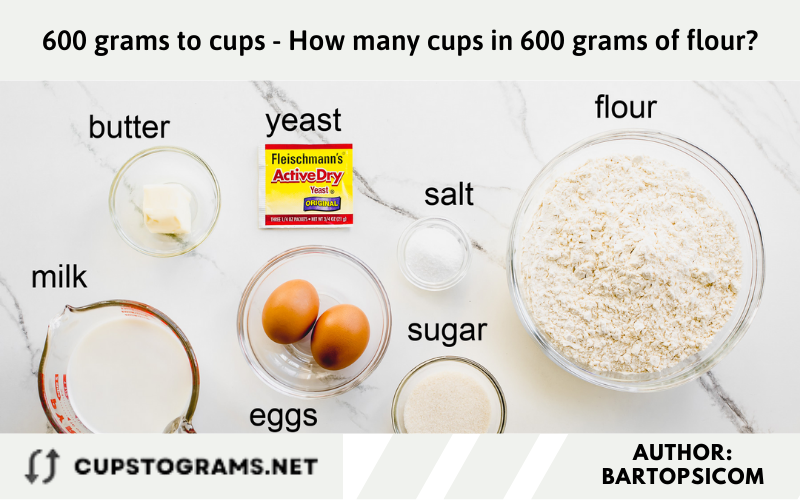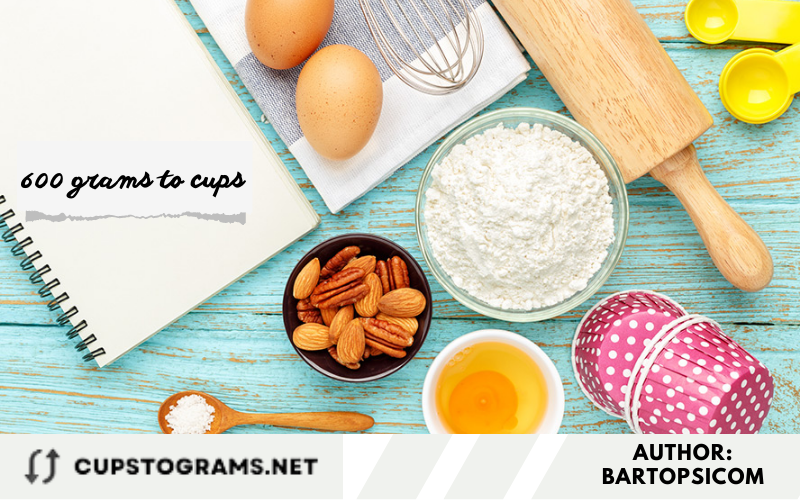Converting 600g of Flour to Cups: A Comprehensive Guide
In the world of baking and cooking, accurate measurements are essential to ensure the success of your recipes. One common dilemma that arises is converting grams (g) to cups, as these two units of measurement are commonly used in different parts of the world. In this guide, we will explore the process of converting 600g of flour to cups, providing clear explanations and even a comparison table for your convenience.
1. Understanding Flour Measurements

Understanding Flour Measurements
Before we delve into the conversion process, let's briefly discuss the importance of accurate flour measurements. Flour is a fundamental ingredient in baking, and using the right amount can make a significant difference in the texture and taste of your baked goods. While grams are a weight-based measurement, cups are a volume-based measurement. This distinction can lead to confusion, especially when converting between the two.
2. Conversion Factors

Conversion Factors
To accurately convert 600g of flour to cups, you need to consider the density of the flour. Different types of flour have varying densities, which means that the conversion factor can differ. Here are the commonly used conversion factors for different types of flour:
All-Purpose Flour: Approximately 1 cup = 125g
Whole Wheat Flour: Approximately 1 cup = 120g
Bread Flour: Approximately 1 cup = 127g
Using these conversion factors, we can calculate the equivalent cups for 600g of each type of flour:
All-Purpose Flour: 600g / 125g/cup ≈ 4.8 cups
Whole Wheat Flour: 600g / 120g/cup ≈ 5 cups
Bread Flour: 600g / 127g/cup ≈ 4.7 cups
3. Comparison Table
For a clearer understanding, let's visualize the conversions in a comparison table:
| Type of Flour | Conversion Factor | Equivalent Cups for 600g |
| All-Purpose Flour | 1 cup = 125g | ~4.8 cups |
| Whole Wheat Flour | 1 cup = 120g | ~5 cups |
| Bread Flour | 1 cup = 127g | ~4.7 cups |
4. Precision in Baking
When it comes to baking, precision matters. Slight variations in measurements can lead to different outcomes. Therefore, if your recipe specifically calls for 600g of flour, it's recommended to use a kitchen scale to ensure accuracy. However, if you don't have access to a scale, the conversion to cups can still provide a close approximation.
5. Considerations and Tips
Spoon and Level: When measuring flour using cups, use a spoon to gently fill the cup and then level off the excess with a straight edge. Avoid tapping the cup, as it can compress the flour and lead to inaccurate measurements.
Fluffing the Flour: If you're scooping flour directly from the bag, consider fluffing the flour first. This helps prevent densely packed flour from skewing your measurements.
Converting 600g of flour to cups involves understanding the conversion factors based on the type of flour you're using. While a kitchen scale provides the most accurate measurement, the provided conversion factors can help you achieve a close approximation using cups. Always keep in mind the importance of accurate measurements in baking, and follow the tips mentioned to ensure your culinary creations turn out as intended. Happy baking!